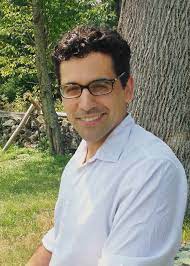by Mike Telin

Lucky for her, that concert was moved to this season, “so I had my chance to play it this past fall.” On Thursday, March 10 at 7:30 pm in Stambaugh Auditorium, Shaham will have another opportunity to play Schumann’s Concerto when she joins the Youngstown Symphony Orchestra under the direction of André Raphel. The program also includes Jennifer Higdon’s blue cathedral and Shostakovich’s Symphony No. 5. Tickets are available online.
Mike Telin: Why are you so in love with the piece?
Orli Shaham: There’s something about Schumann that speaks directly to the soul. I find this piece to be so natural in the way that it communicates. Even if you don’t have a programmatic idea of the story — which you certainly don’t need to — there’s something about the way that it tells the story that is very visceral.
He was a wonderful pianist, so pianistically it’s incredibly satisfying to play. It’s also a joy for me because it’s one of those rare pieces that combines the feeling of a big orchestral work with the intimacy of a small piece of chamber music for a private audience.
MT: Are those the things that drew you to it early in your life?
OS: I think that early in my life it was just the satisfaction of playing it, but I’ve always loved playing Schumann. When I was a teenager my teacher happened to love Schumann so I played a lot of it.
There’s something about not only his use of chords and writing — he really pushed piano technique a lot in the way that he wrote — but there’s also the way that he handles rhythm that I think is very satisfying. Nothing is ever what it seems. There’s always another layer of what is happening rhythmically and that always feels great.
MT: Although I love Schumann, I must confess that it took me some time to understand his music.
OS: What you’re saying about taking time is actually an important part of it. His music is immediately accessible because it sounds nice, but there is that added layer that you need to be able to get into.
One of the things I love about the piece — which I didn’t know anything about at first — is Clara Schumann’s association with it. He wrote it with her technique and musicianship in mind and she not only premiered it, she performed it over a hundred. times all over Europe. She really owned it. I love that story and that connection between the two of them — there’s such a love story in that relationship
MT: Have you worked with André Raphel?
OS: The last time was easily fifteen years ago. We had a wonderful collaboration and I’m looking forward to working with him again. It’s a funny business, but sometimes it does take fifteen years to work with someone again. Even longer with the two-year absence of concerts.
MT: Speaking of which: How did you stay occupied during that period?
OS: It’s funny because so many people did have a lot of extra time on their hands, but I really didn’t. I did maybe for the first couple of months, but I had a few things working against having time on my hands, one being that I had two middle school boys at home.
But during the first few weeks when things were shutting down, I went back to roots pianistically, I ended up obsessing over Chopin Etudes. Just bringing things back into focus technically.
The other thing that occupied my time is that I began playing pre-recorded concerts pretty soon into the shutdown so I was very lucky with that. I also did a lot of teaching. I’m very lucky to be able to teach at Juilliard, I have some amazing students, which is a good deal for me. So in many ways my life has completely shifted from pre-pandemic when most of it was performing and a tiny part was teaching.
MT: And I see that you’re still curating the Café Ludwig series.

MT: You’re also a guest host and creative for NPR’s From the Top and you hosted a show called “Dial a Musician.” How did you decide to get into interviewing?
OS: I’m fascinated figuring out ways we can help people find a way into the music that we love. How do we help people who may have come to it later or who maybe did not have it in their homes growing up. How do we help them feel that it is available for them?
That was really the impetus behind “Dial a Musician.” I thought, I want to find a way to help them understand that musicians are people just like they are. And they can explain the intricacies of what they do. So I would call musicians whose expertise was outside of mine — like Nancy Allen, the principal harp in the New York Philharmonic. She gave a spectacular description about how a harp works. It was interesting to me because I was also learning.
MT: And you have a program for young kids: Bach Yard Play Dates.
OS: That became a keep busy thing during the pandemic project. I was thankful my kids were twelve at the time, but I thought, what would we do if they were just two, three, or four years old. I thought, we have to make some more episodes so people can watch them with their kids. Of course we also want the parents and grandparents to enjoy them.
But it’s the same mission — letting kids know that classical music is there so they feel that it is something open to them that they can explore.
Published on ClevelandClassical.com March 7, 2022.
Click here for a printable copy of this article


